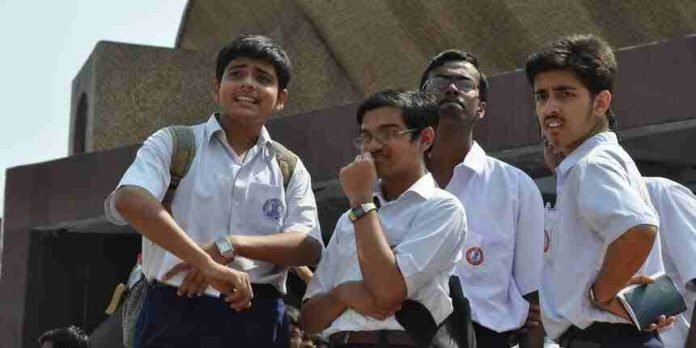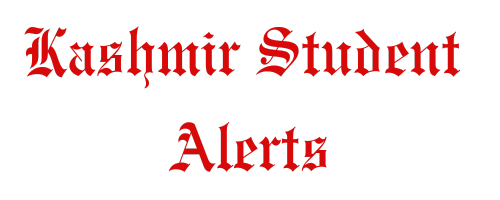Over 58 lakh students didn’t pass Classes 10th, 12th board exams in 2022; education ministry plans reform
New DELHI : Over 58 lakh Class 10 and Class 12 students didn’t progress from their grades in 2022, an analysis of board exam result data from across states by the ministry of education has shown. The analysis was undertaken as part of the process of reforming the school board exam structure to bring it in line with the new National Education Policy (NEP 2020).
The ministry is considering plans to bring school boards across the states and the Union Territories to a common platform. Another proposed reform is to merge multiple boards within the same state into one state board for both Class 10 and Class 12 levels.
Apart from a single platform assessment, the ministry report — Examination Results of Secondary and Higher Secondary Boards – Some Observations has suggested skill based training for students who fail exams and mapping of regular boards with open boards to decrease dropouts in secondary and higher secondary level.
According to the report’s data, in 2022, 35 lakh students of Class 10 did not progress to Class 11 in which 27.5 lakh students failed the exam and 7.5 lakh students did not appear for the board exam. Meanwhile 23.4 lakh students didn’t complete Class 12 where 18.6 lakh students failed in the exam and 4.8 lakh students did not appear for the exam.
To retain the students who are not appearing for the board exams and to improve India’s ranking in Human Development Index, the report suggests skilled-based training.
A significantly high number of students who failed was recorded among open school students at both centre and state level with 47% and 55% respectively. Among regular boards, the failure rates were 5% and 16 percent at central board and state boards respectively.
The report further suggested that open schools can reach out to the students who are dropping out at Class 10 and 12 level. In addition, the students who fail in board exams in regular boards can be mapped with open boards to exchange information. The report suggests this mapping to retain and track students in the education system for a longer period. Presently only 10 lakh students are registering through open schools, the report observed.
The ministry has established Parakh – a collaboration between the National Council of Education Research and Training (NCERT) and ETS, a US-based global testing service to assist in enhancing the quality and validity of assessments, developing tests, and conducting research on assessment methodologies.
Class 10, 12 Board exam result
In the effort to align assessment in school education, the education ministry has analysed the board examination results of three central boards– the Central Board of Secondary Education (CBSE), the Council for the Indian School Certificate Examinations (CISCE), and the National Institute of Open Schooling (NIOS) along with several state education boards.
Separate examination boards in eight states including Andhra Pradesh, Assam, Karnataka, Kerala, Manipur, Odisha, West Bengal and Telangana have also been analysed. Earlier in this month, the education ministry conducted a workshop focused on school assessment, examination practices and equality between educational boards nationwide.
State board exam result analysis
Percentage of students passing varies significantly across different examination boards. For instance, in secondary education, some of the high performing states are Kerala with 99.85 pass percentage followed by Telangana and Punjab with 97.6% and 97.8% respectively.
Meanwhile in higher education, pass percentage in Tripura (97.6%), Punjab (97.2%) and Rajasthan(96.6%) is higher than state boards in Andhra Pradesh with 69%, Jammu and Kashmir with 71 % and Madhya Pradesh with 78%.
The report also observed that states having separate boards for secondary and higher secondary, there is large deviation in performance “due to different patterns and approaches followed by boards.”
The top five boards—Uttar Pradesh, CBSE, Maharashtra, Bihar and West Bengal combined have 50 % of the total students enrolled in formal education. Rest of the 50% students are distributed among 55 different boards. Uttar Pradesh board has the highest percentage of students at 14 percent in secondary and 16 percent in high school followed by CBSE with 11 percent students in secondary and 10 percent in high school.
Meanwhile, state boards of Maharashtra have 9 and 10 percent in Class 10 and 12 respectively and Bihar have 9 percent student enrollment at both levels. West Bengal has the lowest percentage share among the top five with 6 percent at both levels.
The data further suggests that 11 states contributed almost 85% of student drop out with 30 lakh students discontinuing formal education in secondary education. At the higher secondary level the same states contributed 77 % drop outs in 2022.
One of the highest dropout rates was recorded in Uttar Pradesh with 5.9 and 5.4 lakh students out of school between Class 10 and 12. Bihar with 8.4 lakh students out of school and Madhya Pradesh with 6.1 lakh students are not far behind.
Southern states like Karnataka, Andhra Pradesh, Tamil Nadu and Telangana were also some of the highest contributing states in higher secondary dropout rates.
NEET, JEE syllabus
Another significant observation made in the report is that science and arts streams have been consistently popular among students in the last 10 years. With a jump of 11%, students who opted for the science and arts stream have increased from 31 % in 2012 to 40% in 2022, the report showed.
In 2022, among general students 42% opted for science, 40% chose arts and 14% chose commerce. Among students who belong to Scheduled Caste, most students–48% chose the arts stream followed by 37% who chose science.
The report further suggested that state boards “converge” the science syllabus with the Central boards so that students have a level playing field for common exams like Joint Entrance Exam (JEE) for engineering and National Eligibility cum Entrance Test (NEET) for medical education.





